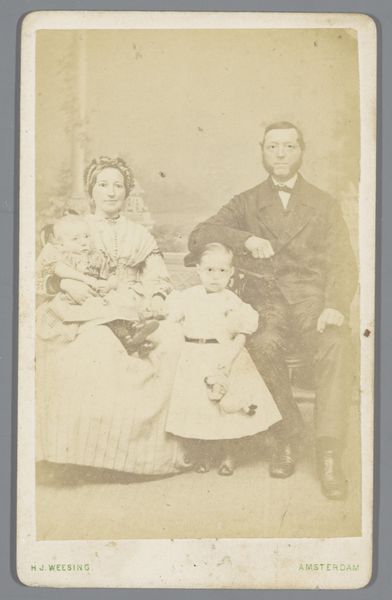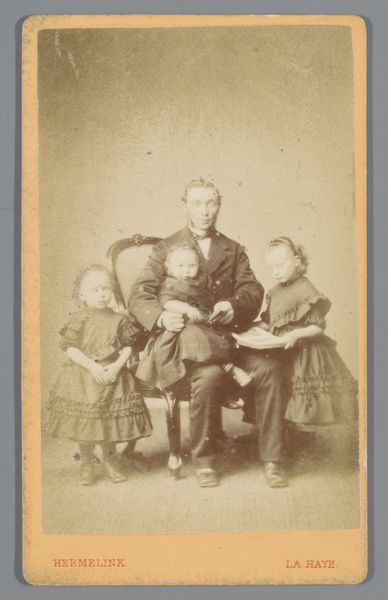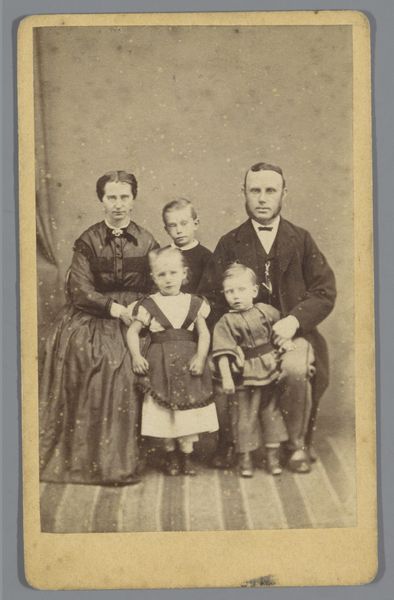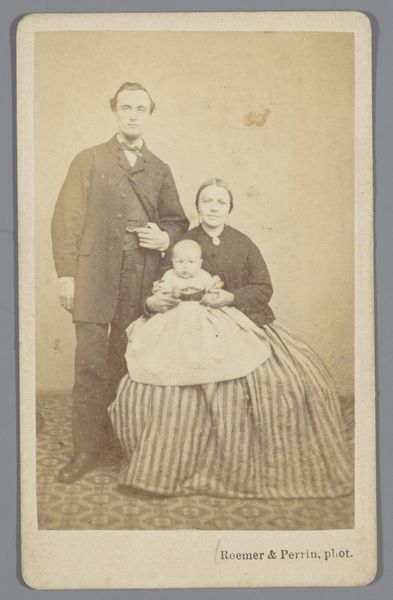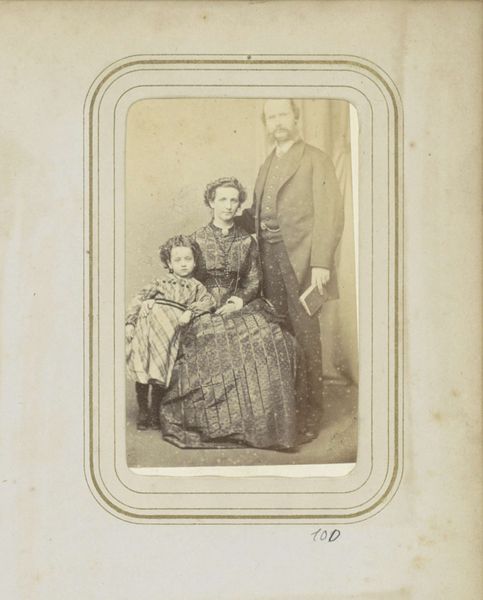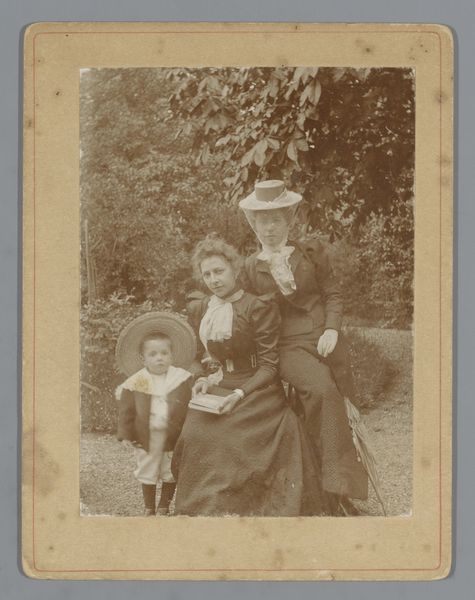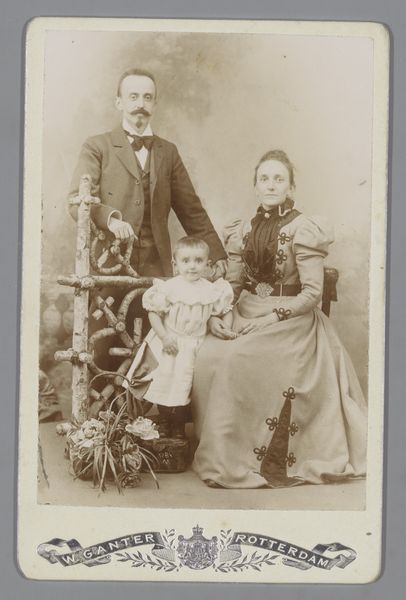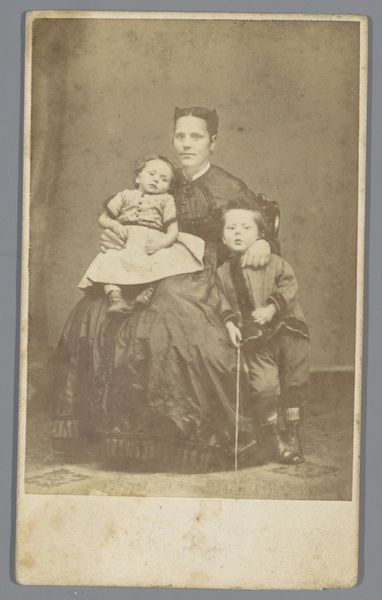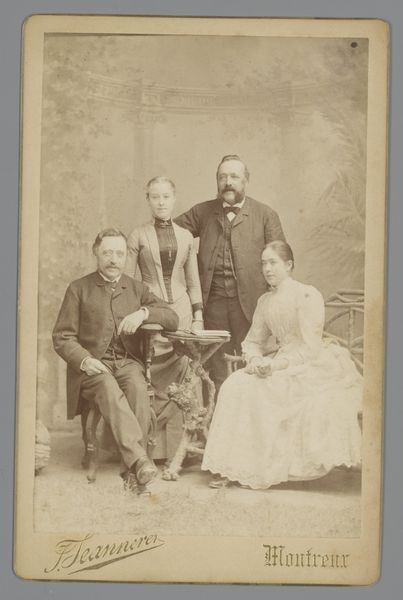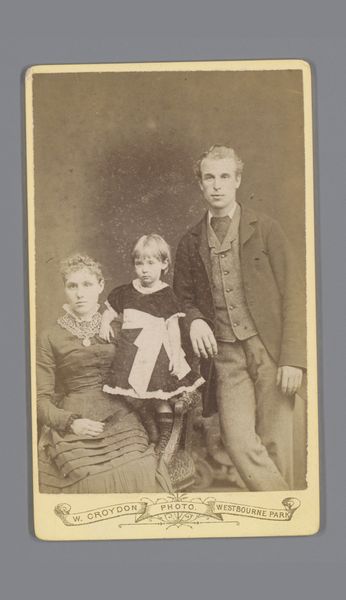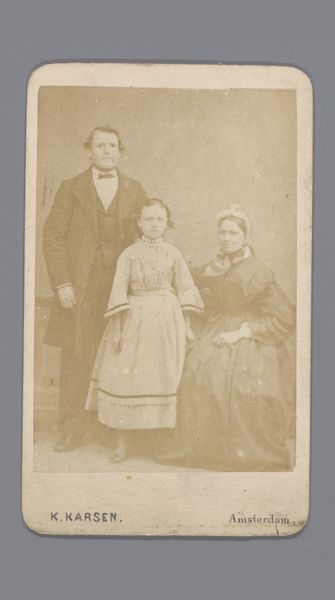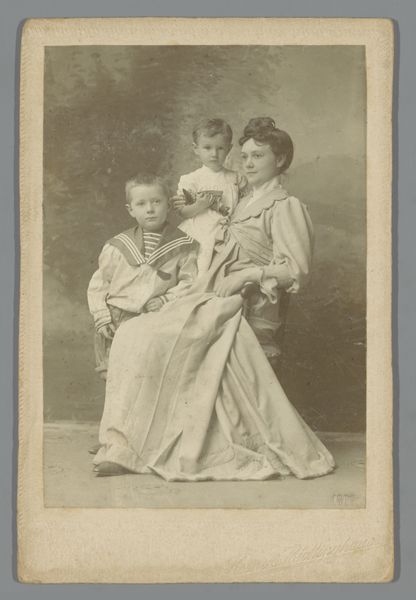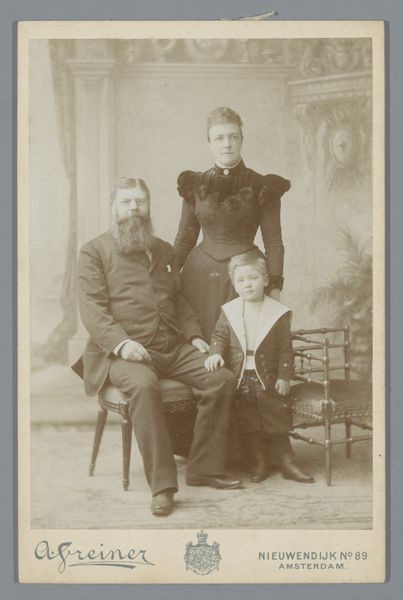
photography, albumen-print
#
portrait
#
photography
#
group-portraits
#
albumen-print
#
realism
Dimensions: height 104 mm, width 62 mm
Copyright: Rijks Museum: Open Domain
Editor: Here we have an albumen print from between 1855 and 1885, titled *Groepsportret van een onbekende familie*, or Group Portrait of an Unknown Family, attributed to G. Heitel. It’s incredibly formal, even stiff, and everyone seems so serious. What strikes you about it? Curator: This is a classic example of bourgeois family portraiture during the rise of photography. The medium itself played a significant role in shaping social representation. Note the careful arrangement – father prominent, leaning, seemingly in charge; the mother centered, the children beside them, exhibiting a distinct visual hierarchy. What does it suggest about social expectations? Editor: It feels… prescriptive. Like a visual instruction manual on how to be a proper family. Were these kinds of portraits common? Curator: Absolutely. Photography democratized portraiture, making it accessible to a wider middle class aspiring to emulate aristocratic traditions of display and remembrance. Consider the studio backdrop, intended to suggest wealth and taste. It's all meticulously staged to project an image of respectability and upward mobility. Editor: So it's less about capturing reality and more about constructing a desired image? Curator: Precisely. And what’s absent is just as telling as what’s present. Are there signs of labor, tools of a trade? No. This is carefully curated imagery to signal a particular status. How do you think this contributed to broader social changes and ideologies? Editor: It reinforces a specific model of family and success, leaving out anyone who doesn’t fit that mold. It’s a powerful statement about who belongs. Curator: Indeed. Photography, seemingly objective, becomes a powerful tool for shaping and perpetuating social norms. Something to think about when we look at images today. Editor: I never thought about family photos having so much social weight. It’s eye-opening to consider how constructed these "real" images actually are. Curator: Exactly. The intersection of art, technology, and social history continually offers these insights.
Comments
No comments
Be the first to comment and join the conversation on the ultimate creative platform.
